A Journey Through Time
Oman, a land where ancient traditions meet modern progress, is dotted with traditional villages that offer a glimpse into the country’s rich history and cultural heritage. Nestled among rugged mountains, lush oases, and arid deserts, these villages showcase timeless architecture, age-old customs, and a way of life that has remained largely unchanged for centuries. This guide invites you to explore some of Oman’s most captivating traditional villages, each offering a unique window into the nation’s soul.
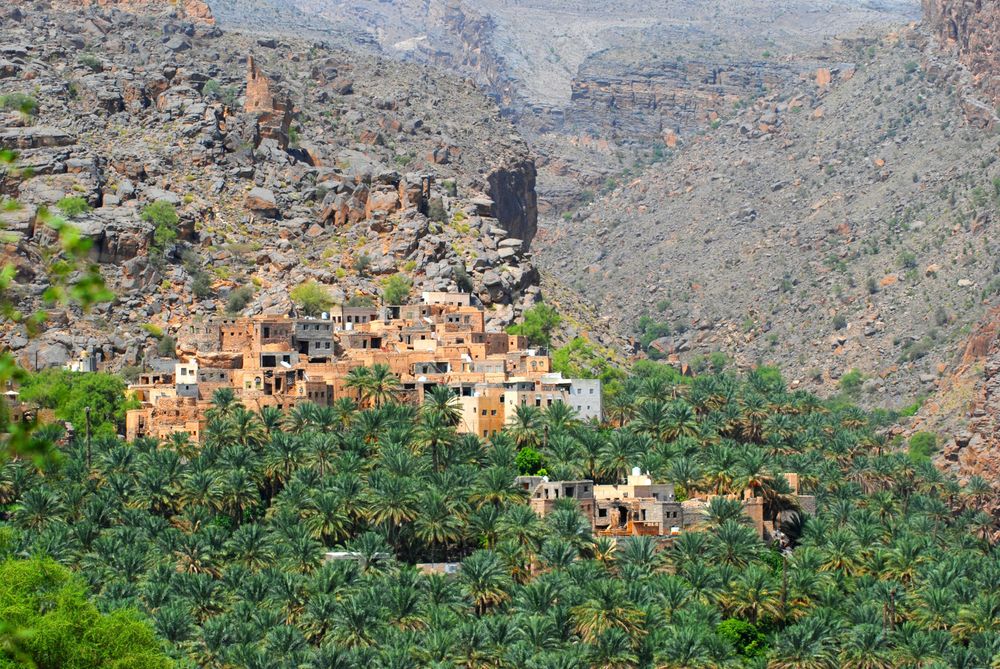
Significance of Traditional Villages in Oman
Traditional villages are integral to Oman’s identity, reflecting the ingenuity and resilience of its people. They provide insights into:
- Architecture: Constructed using locally sourced materials like mud bricks and stones, featuring fortifications, watchtowers, and intricate carvings.
- Agricultural Practices: Utilization of the ancient falaj irrigation system to cultivate date palms, pomegranates, and other crops.
- Cultural Heritage: Preservation of customs, dress, and craftsmanship passed down through generations.
Notable Traditional Villages
1. Misfat Al Abriyeen
Location: Al Hamra region, nestled in the Al Hajar Mountains.
Highlights:
- Stone Houses: Multi-story homes built into the mountainside, showcasing traditional architecture.
- Terraced Farms: Lush agricultural terraces irrigated by the falaj system.
- Walking Trails: Narrow pathways winding through the village, offering scenic views.
Experience:
- Wander through the village’s labyrinthine alleys.
- Interact with locals to learn about their way of life.
- Enjoy panoramic vistas of the surrounding mountains.
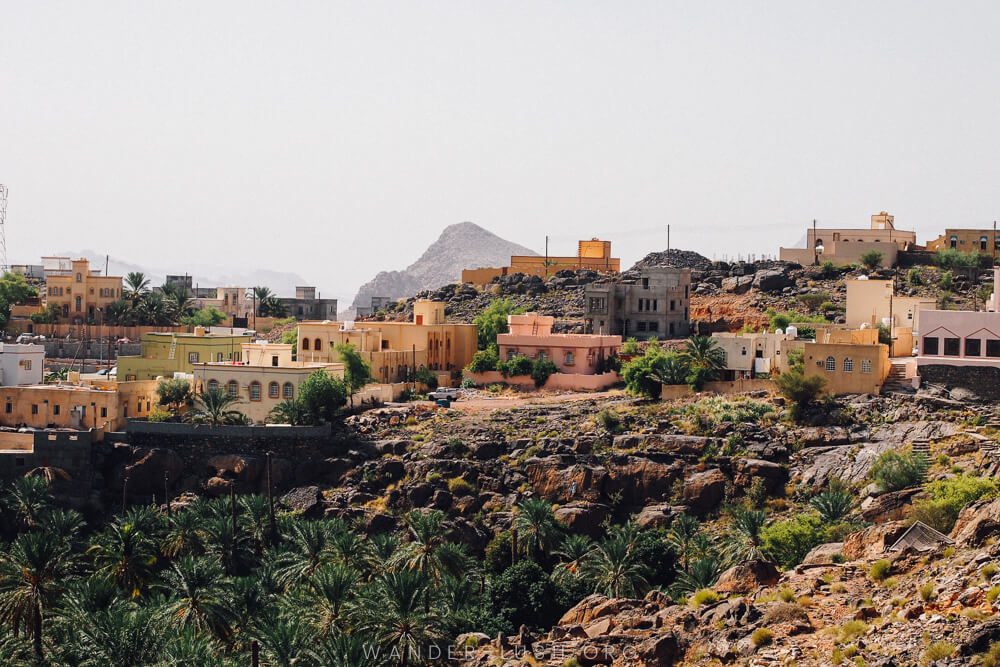
2. Al Hamra
Location: Near Misfat Al Abriyeen, in the Al Dakhiliyah region.
Highlights:
- Old Town: One of the oldest preserved towns in Oman, featuring mud-brick houses over 400 years old.
- Bait Al Safah Museum: A restored home turned into a living museum showcasing traditional Omani life.
Experience:
- Visit Bait Al Safah to see demonstrations of traditional crafts like pottery and weaving.
- Stroll through the old town to admire ancient architecture.
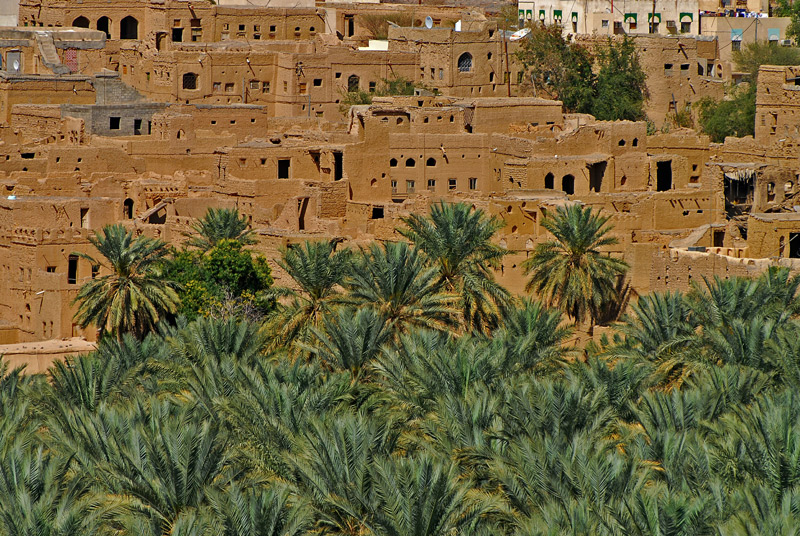
3. Birkat Al Mouz
Location: At the foothills of Jebel Akhdar (The Green Mountain).
Highlights:
- Ruined Villages: Two abandoned mud-brick villages, Al Sayfah, and Al Sharayjah, offering hauntingly beautiful ruins.
- Falaj Al Khatmeen: A UNESCO-listed irrigation system still in use today.
- Date Plantations: Extensive groves provide a serene environment.
Experience:
- Explore the ruins and imagine life in bygone days.
- Walk along the falaj channels amidst lush plantations.
- Visit the small museum dedicated to the falaj system.
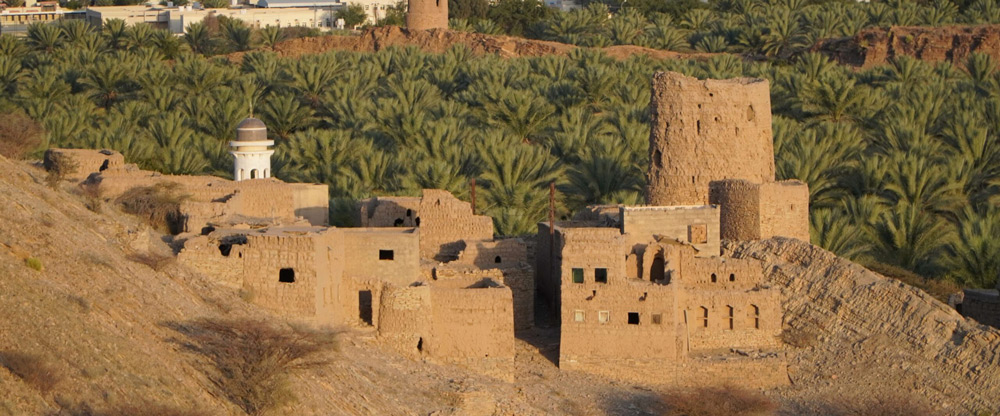
4. Al Ayn and Bat
Location: Near Ibri in the Al Dhahirah region.
Highlights:
- UNESCO World Heritage Sites: Noted for Bronze Age tombs dating back over 5,000 years.
- Beehive Tombs: Unique stone structures offering insights into ancient burial practices.
Experience:
- Hike to the tomb sites for a blend of history and stunning landscapes.
- Learn about the archaeological significance of the area.
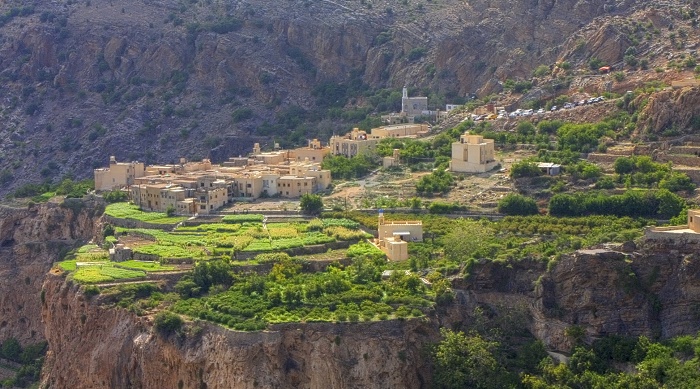
5. Ghalilah Village
Location: In the Musandam Peninsula, near the city of Khasab.
Highlights:
- Remote Access: Reachable via a steep mountain road, offering a sense of seclusion.
- Traditional Lifestyle: Inhabitants maintain a lifestyle largely untouched by modernity.
Experience:
- Engage with villagers to understand their customs.
- Enjoy breathtaking views of the surrounding fjords and mountains.
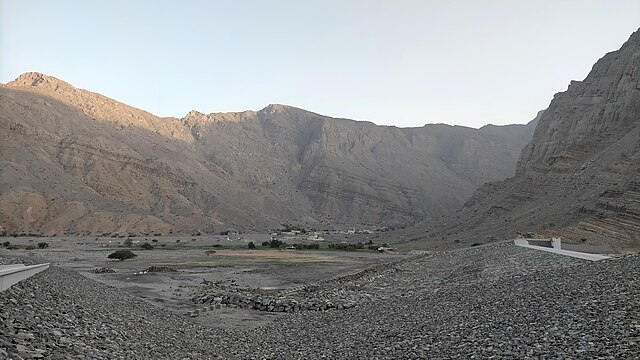
6. Harat Al Bilad
Location: In the town of Manah, near Nizwa.
Highlights:
- Fortified Village: Features defensive walls, towers, and gates.
- Mud-Brick Architecture: Well-preserved homes and public buildings.
Experience:
- Walk through the narrow streets to explore residential quarters, mosques, and meeting halls.
- Appreciate the defensive structures that protected the village in the past.
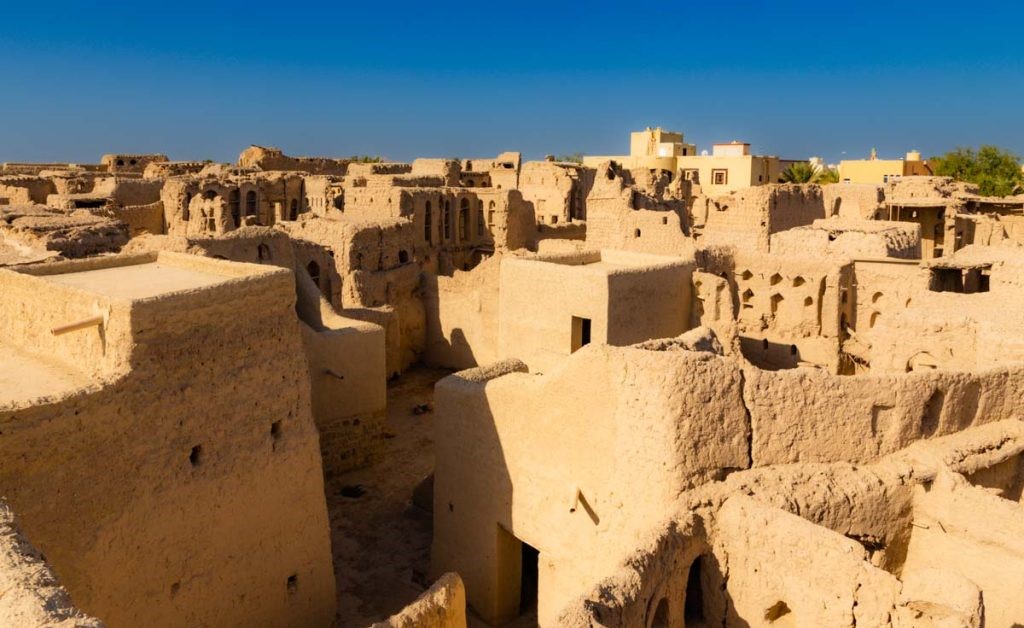
7. Qalhat
Location: Along the eastern coast, near Sur.
Highlights:
- Historical Significance: An important trading city in the 11th to 15th centuries.
- UNESCO World Heritage Site: Recognized for its archaeological remains.
Experience:
- Visit the Bibi Maryam Mausoleum, the most prominent structure still standing.
- Reflect on the village’s past as a bustling port connected to ancient trade routes.
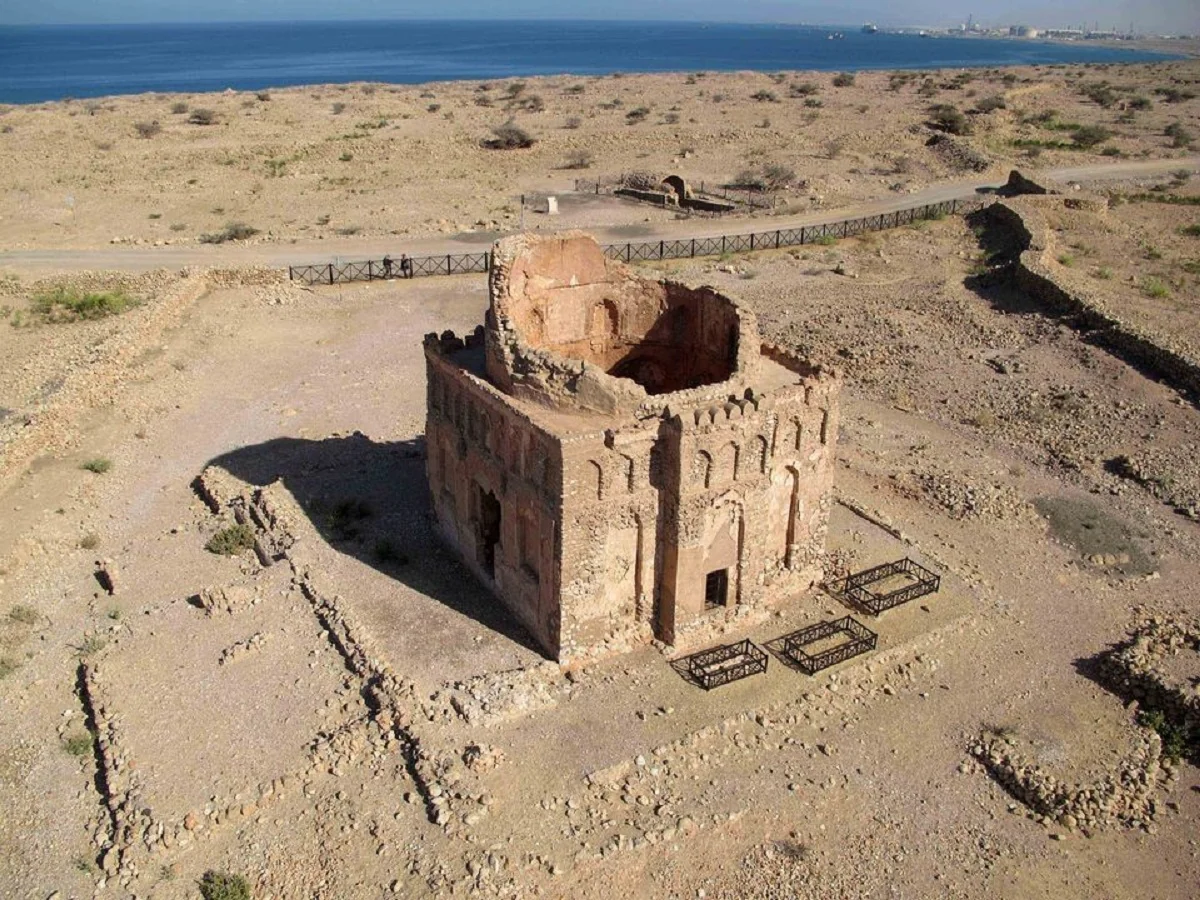
Cultural Insights and Activities
Traditional Crafts
- Pottery: Villages like Bahla are renowned for their pottery workshops.
- Weaving: Witness the creation of traditional textiles and rugs.
- Metalwork: Explore the crafting of khanjars (Omani daggers) and silver jewelry.
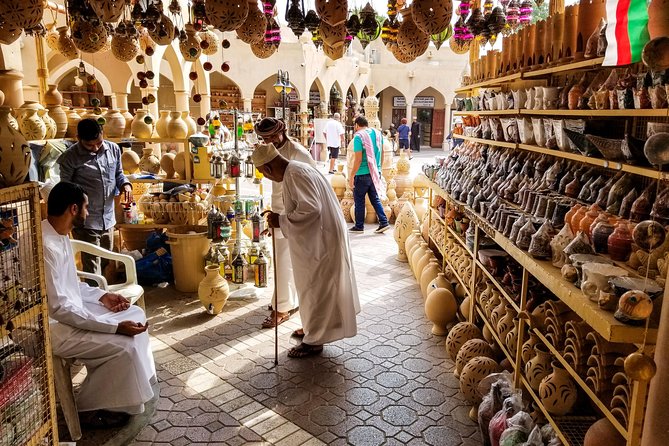
Local Cuisine
- Dates and Coffee: Partake in the Omani tradition of hospitality with locally grown dates and cardamom-infused coffee.
- Home-Cooked Meals: Some villages offer guesthouses where visitors can enjoy authentic Omani dishes.
Festivals and Celebrations
- Religious Festivals: Experience communal prayers and feasts during Eid.
- Harvest Seasons: Participate in date or rose harvests, depending on the season.
Practical Tips for Visitors
Respect Local Customs
- Dress Modestly: Wear clothing that covers shoulders and knees.
- Ask Permission: Before photographing people or private property.
Etiquette
- Greetings: A simple “As-salamu alaykum” (peace be upon you) is appreciated.
- Shoes: Remove footwear when entering homes or certain public buildings.
Sustainability
- Environmental Care: Stay on designated paths to protect agricultural areas.
- Support Local Economies: Purchase crafts directly from artisans.
Accessibility
- Transportation: Some villages are accessible only by 4×4 vehicles; consider hiring a local driver.
- Guided Tours: Enhance your experience with guides who can provide historical context and facilitate interactions.
Conclusion
Discovering Oman’s traditional villages is more than a journey through picturesque landscapes; it’s an immersion into the heart of Omani culture and history. These villages stand as living museums, preserving the architectural styles, customs, and way of life that have shaped the nation. By visiting these communities, travelers not only witness the enduring legacy of the past but also support the preservation of these cultural treasures for future generations.
So, set your course towards the timeless villages of Oman and let each step transport you deeper into a rich tapestry of heritage and hospitality.
We hope this guide enriches
your exploration of Oman’s traditional villages. Safe travels and happy discovery!
